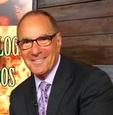Are you among the 80 million Americans born between approximately 1982 and 2001? Look around. Have you noticed that you make up about a third of your workplace? The U.S. Bureau of Labor Statistics has noticed and they say that what’s more, in just five more years, you presence will jump to 46% of the workforce in the next five years.
Stand back, employers, ready or not, this group of up and coming leaders are here and more are coming!
While Millennials are naturally moving into offices, stores, startups, for-profit and non-profit organizations, current managers and executives in these companies are not so naturally prepared to engage these young folks in the best interest of the future of their businesses.
What do these younger folks want? Ask them, and no doubt they’ll tell you.
Many in positions of leadership today are awkward with, if not downright afraid of, the Millenial’s distinctive meaning of achievement-oriented success, their techno- savvy comfort with a constant flow of information, their social media presence and always connected optimism. Yet, armed with the correct skills and mindset, current leaders can harness this potent new entry into the workforce and collaboratively score big business wins! Emphasis here is on the word collaborative.
Your little league team, summer camp experience, and parental supervision was nothing like theirs. They will tell you what they want from you and their employment because they have always expressed their thoughts and desires, and are used to being a part of a collaborative, involved team. There’s that word again. Collaborative.
So what can you do to assure you are engaging this powerfully capable, adaptable to the max, personal enrichment focused, expanding group of employees?
Here are four ideas to turn your workplace into a welcoming new home for Millennials in which to thrive and flourish in the name of noble business building victory:
1. Contribution – Make room for their influence by asking for meaningful input. Be prepared for their involvement and participation to come in quick emails, text messages and quick conversations. Respond in kind. Think you need a formal sit-down, face-to-face. “have to” attend meeting? Not so fast. Allow their impact and voice to come through Skype as well. And standing up, pacing, diagramming on white boards if not on actual walls, are all part of the new way their influence will come in. It will be their way, not necessarily yours. Boundaries? Of course, but be sure you coach these men and women to understand why, how it fits into the big picture, and offer lots of opportunity to learn where flexibility is helpful and where it isn’t.
2. The other “C” word, Collaboration – First, understand teamwork and association are key leadership tools that wise leaders have long been using before Millennials began showing up. Are you harnessing the full force of everyone in your workplace through a communal vision and purpose? There’s plenty of collective, common wisdom to transform your organization, that may be going home without your company taking advantage of it. Let’s not leave out “trust” under this heading as well. When you create your team with trust in mind, you are assuring that folks have the opportunity to admit weakness and errors, ask for help, ask questions, take risks, focus on business not politics, and create a positive atmosphere for productivity.
3. Feedback. Millennials have been evaluated, tested, measured, assessed, weighed, quizzed, checked, examined and even analyzed. They expect to have, and thrive on, feedback and want to know the standards, measures and norms they are expected to meet. Share the benchmarks, the gauges, the yardsticks you use to evaluate new and veteran employees.
4. Inspiration. Motivation comes like belly-buttons, “inny’s” and “outy’s,” (ok, internal and external). Millennials are comfortable with external rewards, external signs of encouragement, external stimuli, and external incentives. This will motivate the deeper, more enduring, internal motivation that ultimately drives them to succeed.
Michael R. Mantell earned his Ph.D. at the University of Pennsylvania and his M.S. at Hahnemann Medical College, where he wrote his thesis on the psychological aspects of obesity. His career includes serving as the Chief Psychologist for Children’s Hospital in San Diego, and as the founding Chief Psychologist for the San Diego Police Department. He served on the faculty of UCSD’s School of Medicine, Dept. of Psychiatry.
He provides behavior science coaching for sustainable strategic outcomes, in mindful, values driven and positively adaptive ways to business leaders, entrepreneurs, athletes, individuals, families and fitness organizations to reach new breakthrough levels of success and significance in their professional and personal lives.
Michael is a member of the Scientific Advisory Board of the International Council on Active Aging, the Chief Consultant for Behavior Science for the Premier Fitness Camp at Omni La Costa,, and served as the Senior Consultant for Behavioral Sciences for the American Council on Exercise. He travels the world speaking with fitness and health professionals to provide the most current thinking and tools for behavior change.
He is a best-selling author of three books including the 25th Anniversary updated edition of his 1988 original “Don’t Sweat the Small Stuff, P.S. It’s All Small Stuff.” He is listed is listed in greatist.com’s 2013 “The 100 Most Influential People in Health and Fitness.”
Please connect with Michael on Twitter: @FitnessPsych & @DrSanDiego
Facebook: https://www.facebook.com/michael.mantell
Linkedin: https://www.linkedin.com/in/drmichaelmantell

Post new comment
Please Register or Login to post new comment.